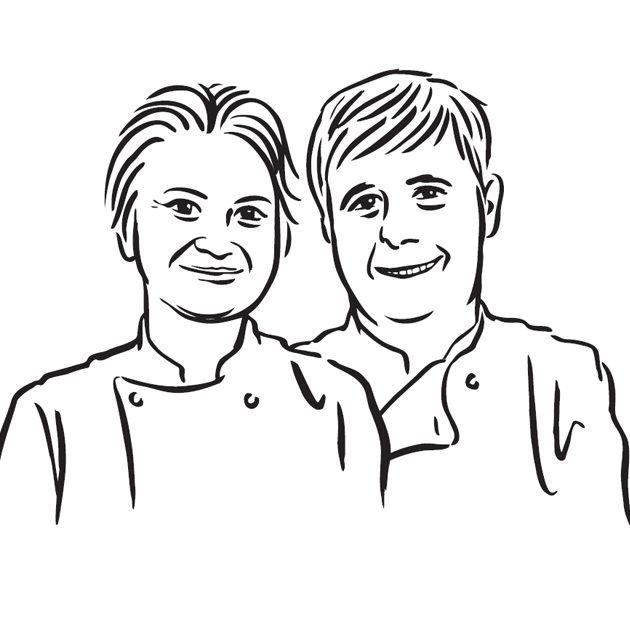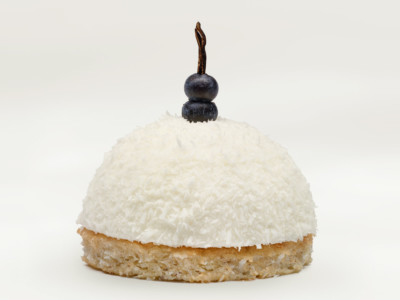Pain de Sucre is a twoperson, catering-based operation. This means that in the creations made by this pâtissier couple, there are classical bases, but less sugar and a re-working of the appearance and recipes for an original play of textures. The NATHALIE ROBERT & DIDIER MATHRAY hallmark is a refined, rather Zen presentation, using squares where every piece of ornamentation is justified. Before, Nathalie and Robert worked for Pierre Gagnaire. They met under his direction and then created Pain de Sucre.
 France
France

It’s in a third of our desserts. It’s a medium that is light but with sufficient fat to fix the flavours. Cream offers the possibility of very light textures that hold their shape. We actually use very little gelatine. Also, it’s a medium that is relatively neutral if it’s not sugared.
When we use cream, we like for it to not show: this light, shiny element to cream is relaxing visually, it is whiter than white chocolate, which has a touch of an ivory colour. For example, you can make a biscuit, cover it with fruit pulp and something crisp, then with cream over the top. We also do substantial work with infusions. Rosemary, coriander or in association with natural rosewater or orange blossom water. We’re going to try briar rose soon. Our rosemary, for example, is a cream with orange flower water, strawberry-rhubarb pulp, combined with almond milk and an infusion of rosemary in Chantilly.
Chantilly is always plain, without sugar, perhaps flavoured with an infusion but that’s it. This is because we like desserts that don’t have much sugar. Cream can provide a desugaring function. Whipped cream, in comparison with mascarpone, is a truly light element. We expand it very cold for a really superior shape, a smoother and whiter look and a lot of lightness. Cream makes it possible to play with textures. Unwhipped cream can be very unctuous, very creamy. A creamy ganache, for example, is unctuous but not foamy; it’s rather compact. It’s the water in the cream that brings this freshness. But a mousse is more for whipped cream. We only use heavy cream for the macaroon-chocolate ganache, because it’s more unctuous (Bernachon makes his ganaches this way, with a heavy cream base). We also have a recipe for scones based on cream and butter that Nathalie brought back from Ireland.
L’Éphémère, one of the first cakes that we made, in 2004. A white cake, very light but flavourful, you don’t see the blackcurrant but its acidity is powerful and the contrast with the fat strikes a very beautiful equilibrium. It’s one of the first white cakes that we made.
We love it reasonably! Pastries without cream don’t have any flavour. Even though I also like it in cooking, I find it heavier than in pastry-making.
The cream tart (a brioche dough, heavy cream, sugar, salted butter, in a very hot oven, very quick). I really like these boulanger-style cakes, a little rustic, that are presented on the counter, unrefrigerated.
PAIN DE SUCRE
Paris 3e
 繁體中文
繁體中文  简体中文
简体中文  한국어
한국어  Français
Français 
